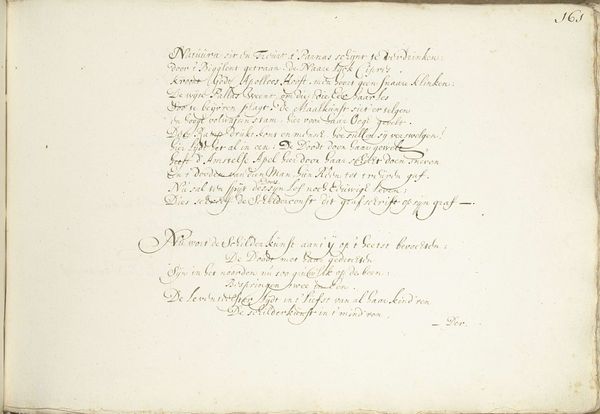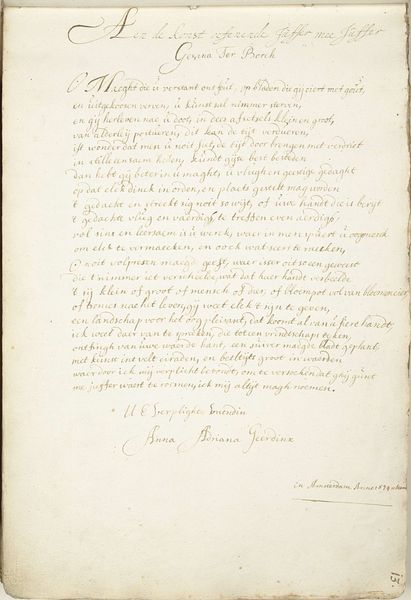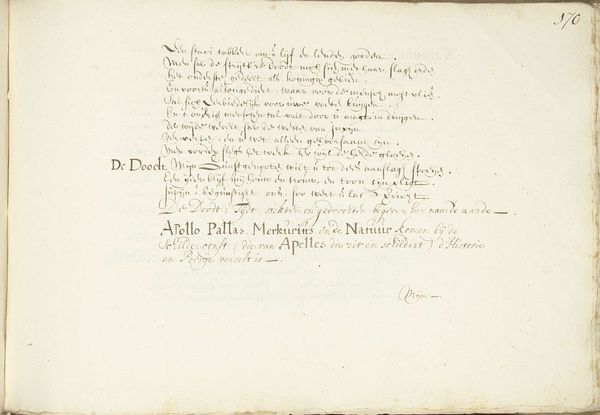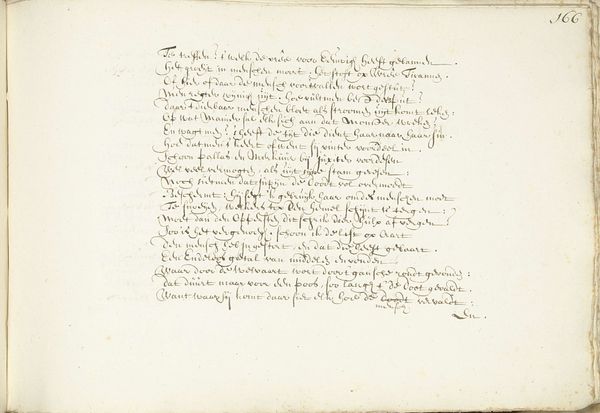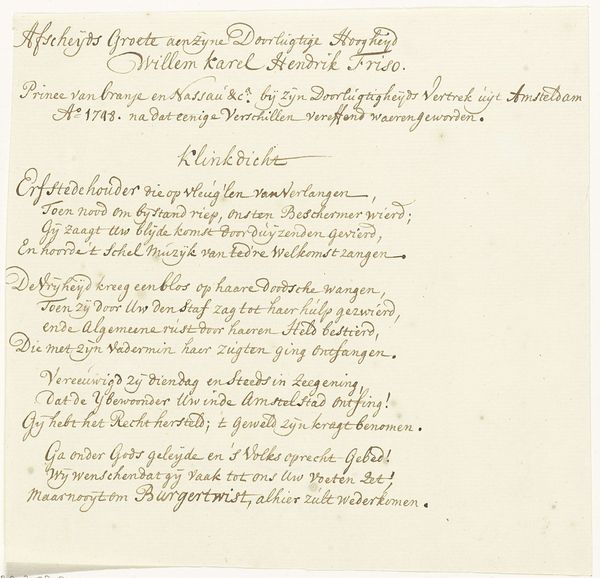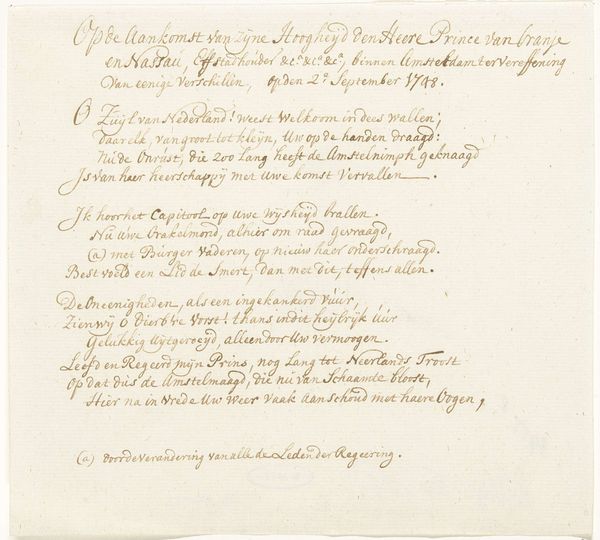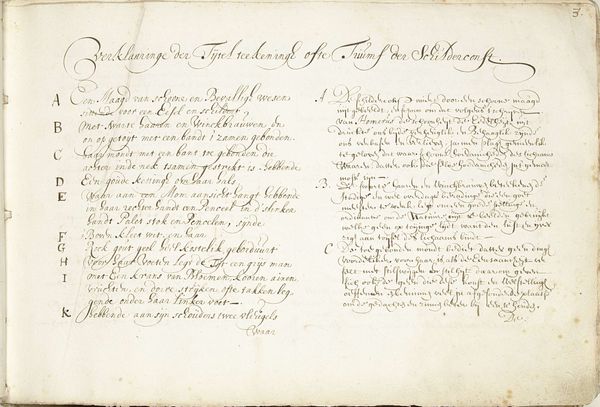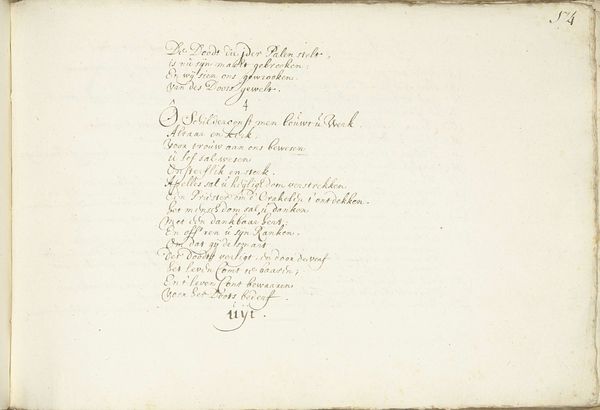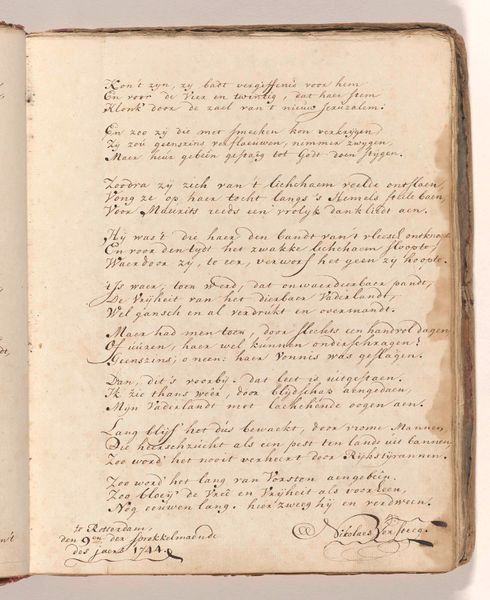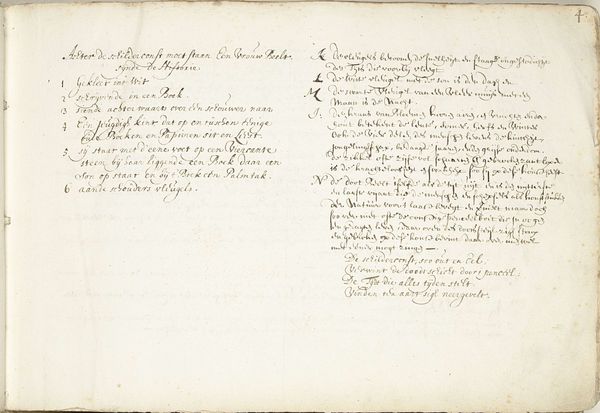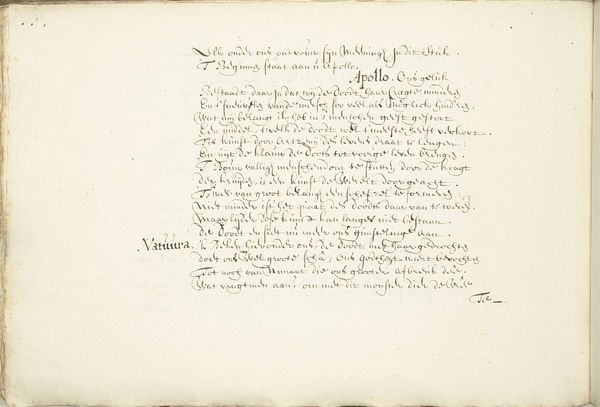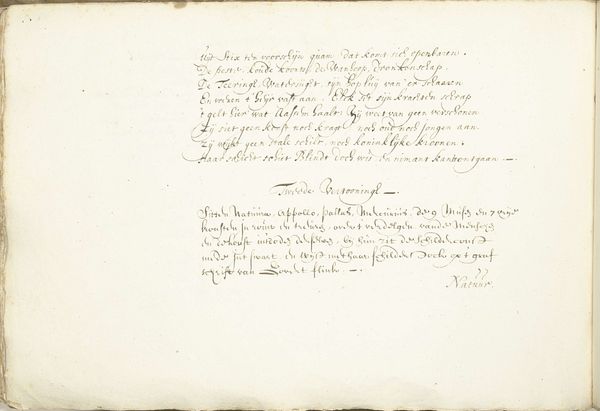
Gedicht over de titeltekening van het Familie-plakboek van Gesina ter Borch (deel 1) c. 1660
0:00
0:00
drawing, paper, ink
#
drawing
#
narrative-art
#
dutch-golden-age
#
paper
#
ink
#
history-painting
#
calligraphy
Dimensions: height 243 mm, width 360 mm
Copyright: Rijks Museum: Open Domain
Curator: Here we have “Gedicht over de titeltekening van het Familie-plakboek van Gesina ter Borch (deel 1),” which translates to “Poem on the title page of Gesina ter Borch’s Family scrapbook (part 1).” It dates from around 1660. Editor: It feels very intimate, almost secretive. The handwritten script sprawls across the aged paper. I get a sense of looking at something intensely personal and fragile. Curator: Exactly. This piece offers insights into the life and craftsmanship of Gesina ter Borch and the material culture of the Dutch Golden Age. Consider the ink and paper – the very supports of knowledge and memory. The hand-written nature gives this object incredible weight, because Ter Borch took considerable time to commit these words to paper. This wasn't printmaking, done en masse, or on commission for sale; the physical process emphasizes creation, ownership, and intention. Editor: What do you make of the poem itself? While I struggle to read every word of this antique Dutch, the overall effect seems to elevate the importance of family and art-making. The flourish with which Gesina penned her own name seems quite deliberate as if to claim space for herself, both literally on the page and within the larger historical narrative. Her family scrapbook acts almost as a secular Book of Hours for private meditation, elevating memory to sacred status. Curator: Agreed. Note that while Gesina did not do this writing quickly, with her calligraphy in play it has more impact and intention to what she produced. So for her, that attention to design also influenced her use of her materials, as she constructed a lasting history she saw for herself, as a woman in her era, who would most certainly outlive her craft supplies. Editor: There is such resonance in that idea: a woman staking her claim, weaving her identity through carefully chosen words and artful script. What remains, then, from our perspective? Curator: It leaves us understanding what effort was applied to her materials at the time; this single, extant page speaks volumes of larger patterns of labor, domestic life, and craft economy. Editor: Precisely. It causes one to meditate on the weight that visual symbolism bears and transmits.
Comments
No comments
Be the first to comment and join the conversation on the ultimate creative platform.
